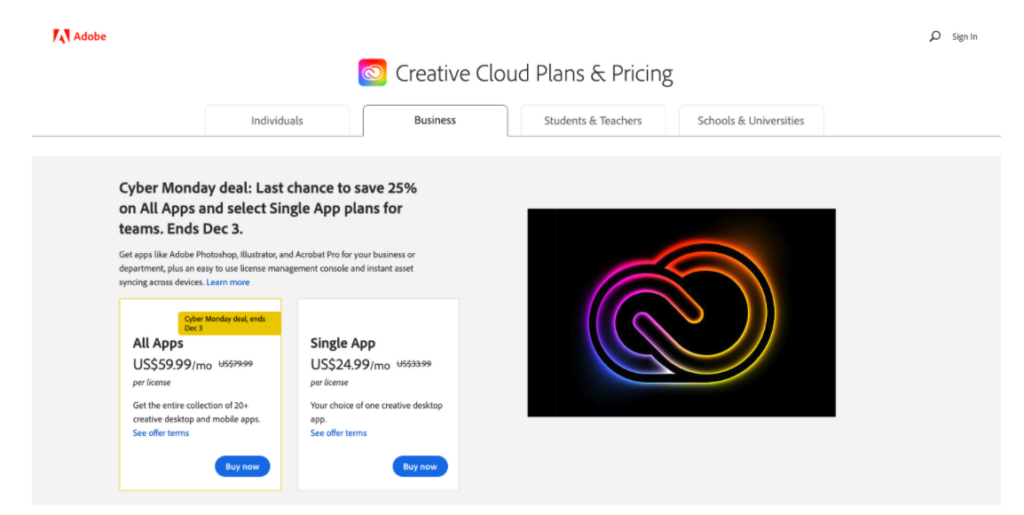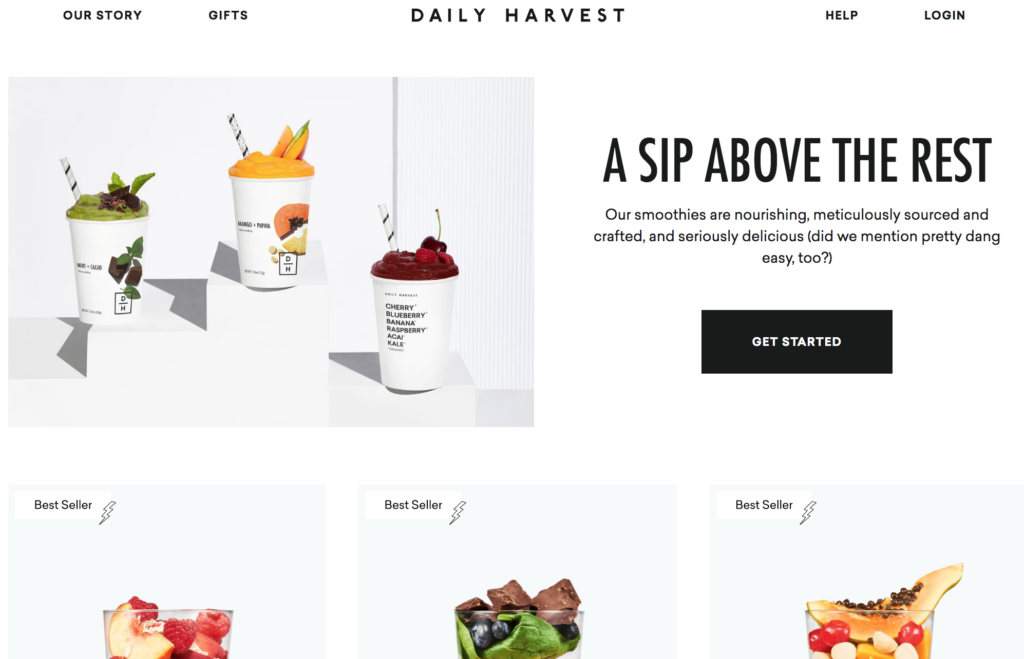- Here’s how to expand your business with subscription-based, recurring payment models.
- Why Are Subscription Payment Models Effective?
- 4 Examples of Successful Subscription-Based Services
- Adobe Won Big by Trading $1,299 Licenses for $59 Per Month Subscriptions
- Bark Draws on Subscription Box Data to Enhance Retail Sales
- Daily Harvest’s Subscription Smoothies Blend Convenience, Nutrition and Brand Image
- Spotify Relies on Subscriptions for Over 90% of Revenue
- Drive Adoption and Global Growth with Subscription Payments
- Learn More About Subscription Payments and Seven Other Marketing Trends that Grow Sales
Here’s how to expand your business with subscription-based, recurring payment models.
As technology evolves, so do the ways consumers access content. People are no longer limited to one-time purchases; we now have more opportunities to partake of recurring, subscription-based goods and services. In this way, consumers are “buying into” rather than just “buying.” Whether it be television shows, fitness content or monthly shipments of dog treats, subscription-based payments models are taking off.
Why Are Subscription Payment Models Effective?
Many customers have become more comfortable with the idea of paying on a subscription basis for access to goods and services. For companies, offering subscriptions can be a powerful means of acquiring and retaining customers for the long haul. To grow subscribers in new markets around the world, successful models integrate preferred payment methods from across countries and regions.
4 Examples of Successful Subscription-Based Services
From B2B software to pet supplies, the subscription model is reinventing industries. Here are four examples from companies that are leading and disrupting their categories with subscriptions.
Adobe Won Big by Trading $1,299 Licenses for $59 Per Month Subscriptions
When leading graphic design software provider Abobe switched to a subscription model, the benefits included appealing to a larger audience, improving the customer experience and increasing customer lifetime value.
When Adobe launched its Creative Cloud subscription service, it went from charging businesses one payment of $1,299 for its creative suite, to charging $59.99 a month. The move lowered the barrier to entry, allowing access to the same services only on a monthly subscription basis. This was especially appealing for start-ups and freelancers who previously would have opted for a pirated version of Adobe’s software — or chosen a competitor. (Icon Studios) Many customers value a lower initial cost over lower lifetime cost. Additionally, users no longer have to worry about their version of the product becoming outdated.
Since launching Creative Cloud, Adobe’s market cap has increased by more than 87%. And picking up business from start-ups isn’t the only reason. The average Adobe user stays signed up for years, but it only takes 21 months for subscription fees to equal the cost of one $1,299 license. That means Adobe makes more money per user and enjoys a more predictable monthly revenue stream. Plus, they now have a built-in audience for cross-selling and up-selling opportunities.

Bark Draws on Subscription Box Data to Enhance Retail Sales
Pet-toy retailer Bark launched in 2012, and has since fetched a good deal of market share from traditional pet retailers like PetSmart. Using a monthly subscription payments model, the company saw strong pandemic-era growth that saw revenue increase by 79.0% to $112 million and subscription shipments increased 70.3% to 3.5 million.
Bark began by selling dog toys made by other manufacturers. Thanks to their ongoing relationship with subscription shoppers, they drew on the unique insights into their customers’ needs and challenges and eventually began making their own products. This was so successful that Bark expanded into brick and mortar retail sales, selling their Bark brand toys in Target stores. The strategy worked so well that the company expanded into brick and mortar retail sales through an arrangement with Target to sell their Bark brand toys and became a publicly-traded company in 2021. Bark’s story reveals that subscription payment models and one-off retail purchases don’t need to be mutually exclusive. In fact, many retailers will find success by embracing both worlds.
Daily Harvest’s Subscription Smoothies Blend Convenience, Nutrition and Brand Image
Daily Harvest works on a subscription payments model to send frozen, pre-portioned health food to its customers’ doorsteps. The subscription model here works especially well, since consumers integrate the smoothies, lattes, soups and bowls into their daily or weekly routines. That is, consumers rely on the products because they eat them regularly.
The weekly and monthly subscription options hinge on their target audience’s desire for wholesome, hassle-free health food that arrives frozen and can be stashed in the freezer until ready to eat. In 2018, Daily Harvest had 100,000 subscribers nationwide. (Forbes) Subscribers choose their delivery frequency, and the price per cup changes depending on quantity ordered.
For Daily Harvest, the direct-to-consumer, ready-made, freezer-stable meals are especially successful because of their enticing, targeted brand image.

Spotify Relies on Subscriptions for Over 90% of Revenue
Swedish music and media-streaming company Spotify has seen explosive growth in the past several years. In 2019, Spotify had 217 million active users. Of those, 100 million were paid subscribers. (The Verge)
The company’s two types of business models include a freemium service and subscription-based service. Freemium refers to a two-tier service model, where customers can choose a limited free version or a paid premium version of the service.
Spotify’s free access invites users to give Spotify by using the service for free. Yet, all the premium features — such as skipping ads and enabling offline listening — require a paid monthly subscription. These enticing features work. Paid subscriptions account for over 90% of Spotify’s total revenue. (Starting Business)
Other music streaming websites and apps have come before, but Spotify’s focus on convenience has arguably provided an alternative to music piracy by granting users ad-free access to specific songs on-demand — for only $10 per month.

Drive Adoption and Global Growth with Subscription Payments
Companies are finding that subscription payments can help lower the barrier to entry for new users, create tiered options to give customers more choices, and provide ease and convenience in their everyday lives. These benefits can create lasting customer relationships and, with the right approach, open doors for expansion into new markets.
Learn More About Subscription Payments and Seven Other Marketing Trends that Grow Sales
Get examples, actionable recommendations, tips and technologies for:
- Cross-border sales
- Shoppable content
- In-car commerce
- Fulfillment and delivery innovations
- Visual search
- Progressive web apps
- Subscriptions
- Composable commerce
Sources:
Digital Commerce 360. “Case study: BarkBox’s path to $150 million in sales—and profitability.” Digital Commerce 360, 6 Feb 2018, https://www.digitalcommerce360.com/2018/02/06/case-study-barkboxs-path-150-million-sales-profitability/.
Icon Studios NY. www.iconstudiosny.com, https://www.iconstudiosny.com/subscription-based-business-modal/.
Inc. Want to Retain Customers? Give Them a Reason to Come Back!Hint: your business model may not be enough. 2018. Inc., https://www.inc.com/carter-and-courtney-reum/want-to-retain-customers-give-them-a-reason-to-come-back.html.
Starting Business. “Spotify’s Business Model: What Your Company Can Learn.” Starting Business, 2020, https://www.startingbusiness.com/blog/business-strategy-spotify.
The Verge. “Spotify is first to 100 million paid subscribers.” The Verge, 2019, https://www.theverge.com/2019/4/29/18522297/spotify-100-million-users-apple-music-podcasting-free-users-advertising-voice-speakers.
Wired. Spotify and the Triumph of the Subscription Model. 2018. Wired, https://www.wired.com/story/spotify-and-the-triumph-of-the-subscription-model/.
Forbes. How Daily Harvest’s Founder Is Disrupting The Frozen Food Industry. 2018. Forbes, https://www.forbes.com/sites/elanagross/2018/06/24/how-daily-harvests-female-founder-is-disrupting-the-frozen-food-industry/.
BarkBox. Seeking Alpha. https://seekingalpha.com/article/4441301-pets-arent-going-anywhere-check-out-barkbox
Subscribe Via Email
Thank You!
You’ve Been Subscribed.



